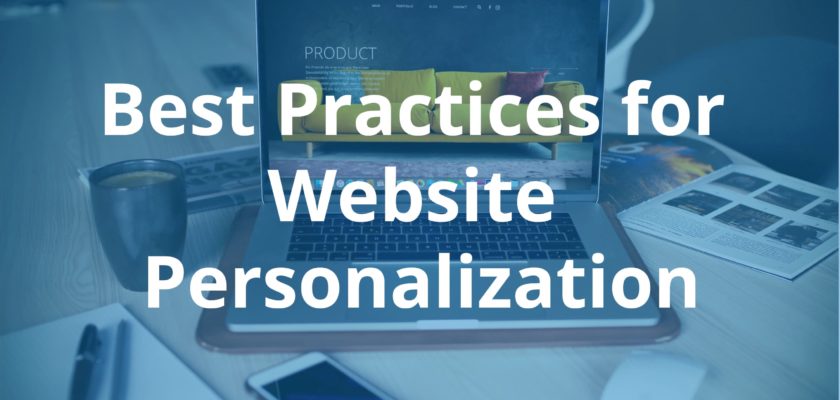Best Practices for Website Personalization

What is website personalization?
Website personalization is creating customized experiences for each user when they visit your website. These unique experiences are tailored to your users’ needs and help them find value they would get out of your website.
Examples of personalization
There are lots of examples of personalization IRL, like baristas knowing their regular customers’ orders the minute they come into the coffee shop, or sales clerks speaking to kids differently than middle-aged women in department stores. Even employees asking their customers what type of clothing they would like help finding is a form personalization.
Whether you’re ready or not, customers are expecting this same level of personalization on websites and mobile apps. They want to log in and see an experience made for them. This could include showing suggested items based on their browsing history, sending custom notifications, or letting customers know they left items in their cart. Users also want location-specific information, like stores nearby or options nearby for dinner.
Why is website personalization important?
Website personalization will only become more prevalent and therefore expected with time. Social networks like Facebook are setting this precedent: news feed have pushed personalization further forward by having such unique experiences, like specific anniversary videos, an explore feed, and posts that would apply most to that specific user. Every other site needs to follow suit if they expect to stay relevant in the world where Facebook and Amazon serve personalized experiences on a silver platter.
Best Practices for Website Personalization
1. Discover what matters to your audience
Target your visitors depending on what they look at on your website, and looking into their customer profiles (demographic, behavioural, technology used, country-specific). It’s important to know who are personalizing to! Use heat maps and track in-app activity and journeys to get the scoop.
2. Plan experiences
Make sure you spend time planning the specific experiences for the different demographics you’ve segmented and different website activity user: What is the journey going to look like? What are each of the digital touch points? Are they all united? Manage how the user’s experience will be personalized towards them.
3. Measure and improve
Personalization isn’t a one-time thing. It’s important to analyze your website’s conversion as you continually iterate to see what went well and what needs to be improved. After looking at what personalization methods worked best and what should perform better, you can continue to improve your website based on what your users want to see.
4. Don’t pigeonhole your customers
It’s important not to slice the pie too thin! Don’t show users just what you think what they would want to read or buy. This will pigeonhole your users and can limit them from exploring other areas on your website. It’s possible to hyper-personalize too much and actually hurt your efforts.
5. Add to your customer’s experience vs. being ‘creepy’
Ensure your top priority is helping your customer vs. over analyzing their patterns and coming off as too intrusive. Being over-personal can scare your users away. Make your goal to help your customer navigate your website versus focusing solely on your gain.
Now you know what website personalization is and why you should be using it today, it’s time to get started planning and iterating on delivering optimized customer experiences today!
